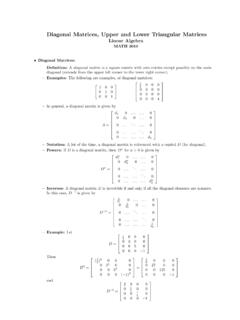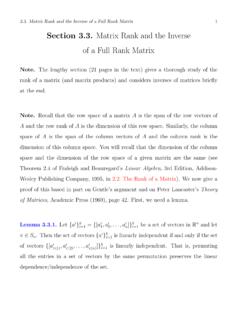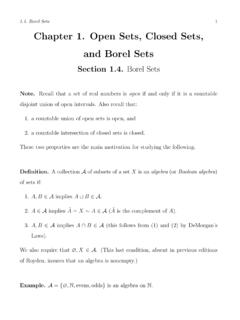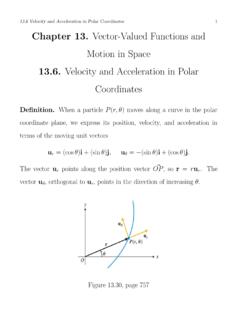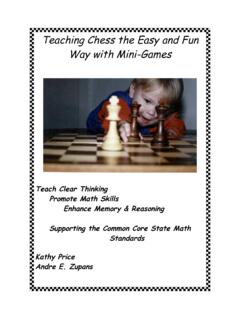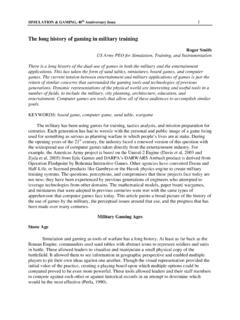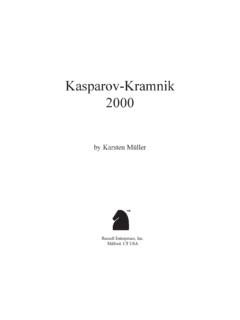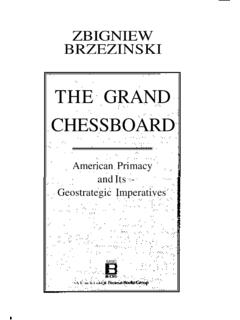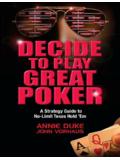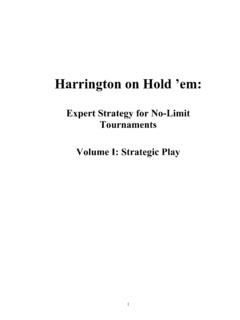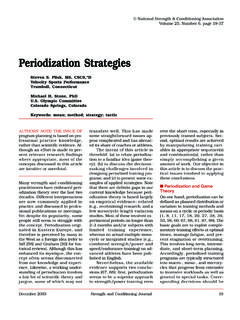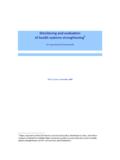Transcription of A Four-Stage Model of Mathematical Learning
1 A Four-Stage Model of Mathematical Learning Jeff Knisley Department of Mathematics East Tennessee State University Box 70663 Johnson City, TN 37614-0663 Phone: (423) 439-7065 Email: 1 Introduction Research in education and applied psychology has produced a number of insights into how students think and learn, but all too often, the resulting impact on actual classroom instruction is uneven and unpredictable (Sabelli and Dede, in press; Schoenfeld, 1999). In response, many in higher education are translating research in education into models of Learning specific to their own disciplines (Buriak, McNurlen, and Harper, 1995; Felder, , 2000; Jensen, 2000).
2 These models in turn are used to reform teaching methods, to transform existing courses, and even to suggest new courses. Research in mathematics education has been no less productive (Schoenfeld, 2000). This paper is in the spirit of the articles mentioned above, in that I combine personal observations and my interpretation of educational research into a Model of Mathematical Learning . The result can be used to address issues such as the effective role of a teacher and appropriate uses of technology.
3 That is, the Model can be viewed as a tool that teachers can use to guide the development of curricular and instructional reform. Before presenting this Model , however, let me offer this qualifier. In my opinion, good teaching begins with a genuine concern for students and an enthusiasm for the subject. Any benefits derived from this Model are in addition 2 to that concern and enthusiasm, for I believe that nothing can ever or should ever replace the invaluable and mutually beneficial teacher-student relationship.
4 Related Literature Decades of research in education suggest that students utilize individual Learning styles (Bloom, 1956; Felder, 1996; Gardner and Hatch, 1989) Instruction should therefore be multifaceted to accommodate the variety of Learning styles. The literature in support of this assertion is vast and includes textbooks, Learning style inventories, and resources for classroom implementation ( , Bodi, 1990; Dunn and Dunn, 1993; Felder, 1993; Liu and Reed, 1994). Moreover, research in applied psychology suggests that problem solving is best accomplished with a strategy-building approach.
5 Studies of individual differences in skill acquisition suggest that the fastest learners are those who develop strategies for concept formation (Eyring, Johnson, and Francis, 1993). Strategic choices and metacognition are also important in research in mathematics education (Schoenfeld, 2000). Thus, a Model of Mathematical Learning should include strategy building as a Learning style. I believe that the Learning Model most applicable to Learning mathematics is Kolb s Model of experiential Learning or Kolb s Model , for short (Evans, et al.)
6 , 1998). In Kolb s Model , a student s Learning style is determined by two factors whether the student prefers the concrete to the abstract, and whether the student 3 prefers active experimentation to reflective observation. These preferences result in a classification scheme with four Learning styles (Felder, 1993; Harman 1995) Concrete, reflective: Those who build on previous experience. Concrete, active: Those who learn by trial and error. Abstract, reflective: Those who learn from detailed explanations.
7 Abstract, active: Those who learn by developing individual strategies These Learning styles are not absolute, and all learners, regardless of preference, can function in all four styles when necessary (Kolb, 1984; Sharp, 1998). Indeed, in the Kolb Learning cycle, each style is considered a stage of Learning and students learn by cycling through each of the four stages (Harb, , Durrant, and Terry, 1993; Kolb, 1984; Pavan, 1998). For example, the cycle begins with the student's personal involvement through concrete experience; next, the student reflects on this experience, looking for meaning; then the student applies this meaning to form a logical conclusion; finally, the student experiments with similar problems, which result in new concrete experiences; and then the Learning cycle begins again (Hartman, 1995).
8 Kolb s Model has been used extensively to evaluate and enhance teaching in engineering (Jensen and Wood, 2000; Pavan, 1998; Stice, 1987; Terry, 1993). In addition, although many other models also apply to Learning mathematics, Felder (1996) showed that many different Learning models produce similar transformations in instruction. Thus, I concentrate on Kolb s Model in this paper. 4 One other common method of Learning that falls outside of Kolb s Model is the memorize and regurgitate method. Heuristic reasoning is a thought process in which a set of patterns and their associated actions are memorized, so that when a new concept is introduced, the closest pattern determines the action taken (Pearl, 1984).
9 Unfortunately, the criteria used to determine closeness are often inappropriate and frequently lead to incorrect results. For example, if a student incorrectly reduces the expression 244xx+ to the expression x2+2x, then that student likely used visual criteria to determine that the closest pattern was the root of a given power. In mathematics, heuristic reasoning may be a sign of knowledge with little conceptual understanding, a short circuit in Learning that often prevents critical thinking. Using heuristic reasoning repeatedly is not likely to build a strong foundation for making sense of mathematics.
10 Kolb Learning in a Mathematical Context Kolb s Learning styles can be interpreted as Mathematical Learning styles. For example, concrete, reflective learners may well be those students who tend to use previous knowledge to construct allegories of new In mathematics courses, these may be the students who approach problems by trying to mimic an 1 An allegory is a figurative description of an unknown idea in a familiar context. 5 example in the textbook.





